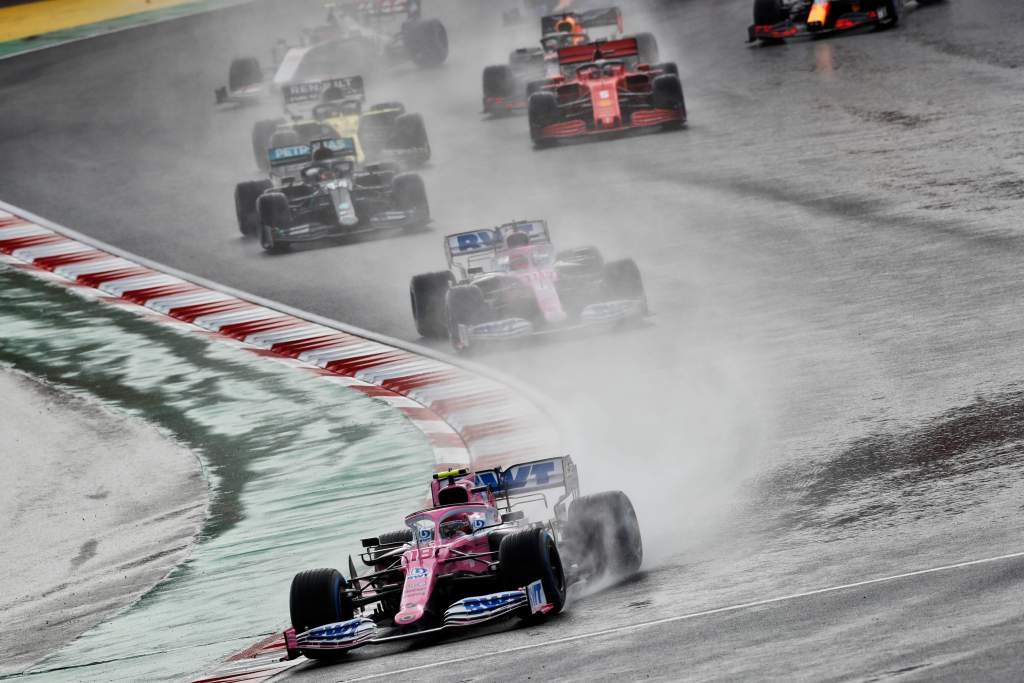Up Next

Formula 1’s COVID-enforced return to Turkey after an absence of nine years last season produced one of the most memorable grand prix weekends in recent times.
What Carlos Sainz dubbed “the strangest Friday” was followed by Lance Stroll’s extraordinary pole position and then Lewis Hamilton’s remarkable win from sixth on the grid on a weekend Mercedes had been genuinely off the pace until the final stages.
So should F1 expect more of the unexpected on its return this weekend?
The short answer is not to the same extent, because the circumstances of the 2020 Turkish Grand Prix were so extreme. A significant reason was the unusually cool conditions thanks to this race being held in mid-November, which also increased the chances of it being affected by rain.
While this year’s running is still relatively late in the year, it’s five weeks earlier and therefore the weather forecast is less problematic even though there is a threat of rain on Saturday and Sunday in particular.
But while bad weather is always a possible curveball wherever F1 lays its hat, and could be again this weekend, there were other unrepeatable factors that contributed.
The first is that the track surface was relaid shortly before the 2020 event, replacing a surface that had been in place for the 2010 and ’11 grands prix at Istanbul Park.
Work was completed just 10 days before the event, meaning there had been almost no time to remove the oils out of the surface. The asphalt used was high-grade, with the work overseen by Tilke Engineers & Architects, but although the surface was to a high standard – similar to the one laid at the Algarve Autodrome ahead of the 2020 Portuguese Grand Prix, with the same type of bitumen used – the aggregate was different.
However, the problem was less the asphalt itself and more the timing of it being laid. It simply didn’t have time to go through the rapid evolution that happens, even without running, in the early months of existence.
On Friday, low temperatures and the low-abrasion, slippery surface meant a day of wheelspin and difficulties getting sufficient energy into the tyres to turn them on – i.e. build enough temperature so that the tyre surface adheres to the track.
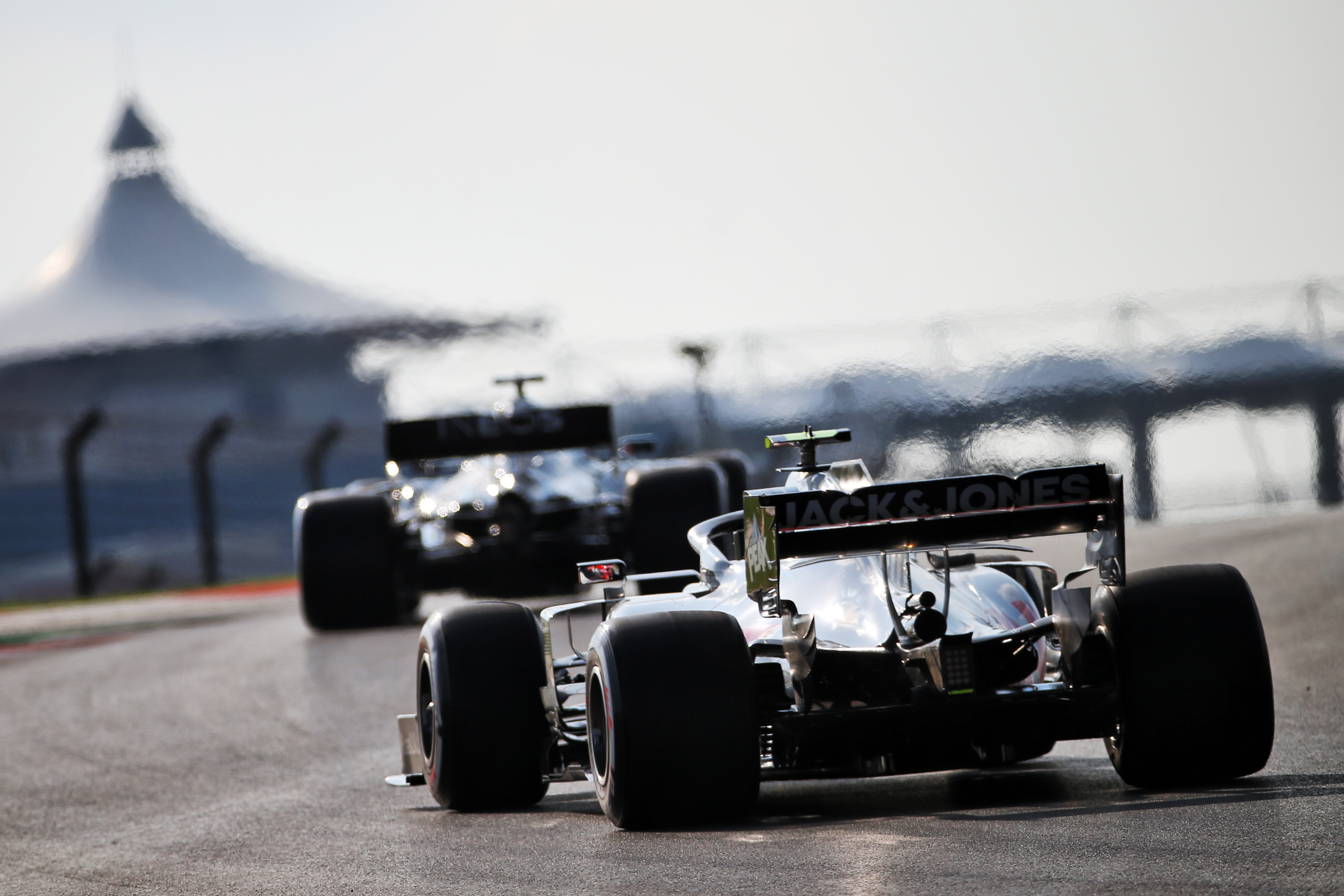
This led to the difficulties in the first practice sessions, which were exacerbated by the fact that FP1 started with the circuit a little damp. With the available grip largely depending purely on friction rather than the chemical binding of the tyre to the track, the smoothness of the surface made it impossible to build the required tyre temperature to get the bulk of the compound up to temperature.
The result was no grip because the tyres never ‘switched on’. Having said that, the track did evolve rapidly throughout Friday, with the conditions remaining dry once the initial dampness had cleared.
But on Friday, concerns were raised about how difficult it would be should it rain. Sure enough, both Saturday and Sunday were rain-affected with the troubles building tyre temperature multiplied.
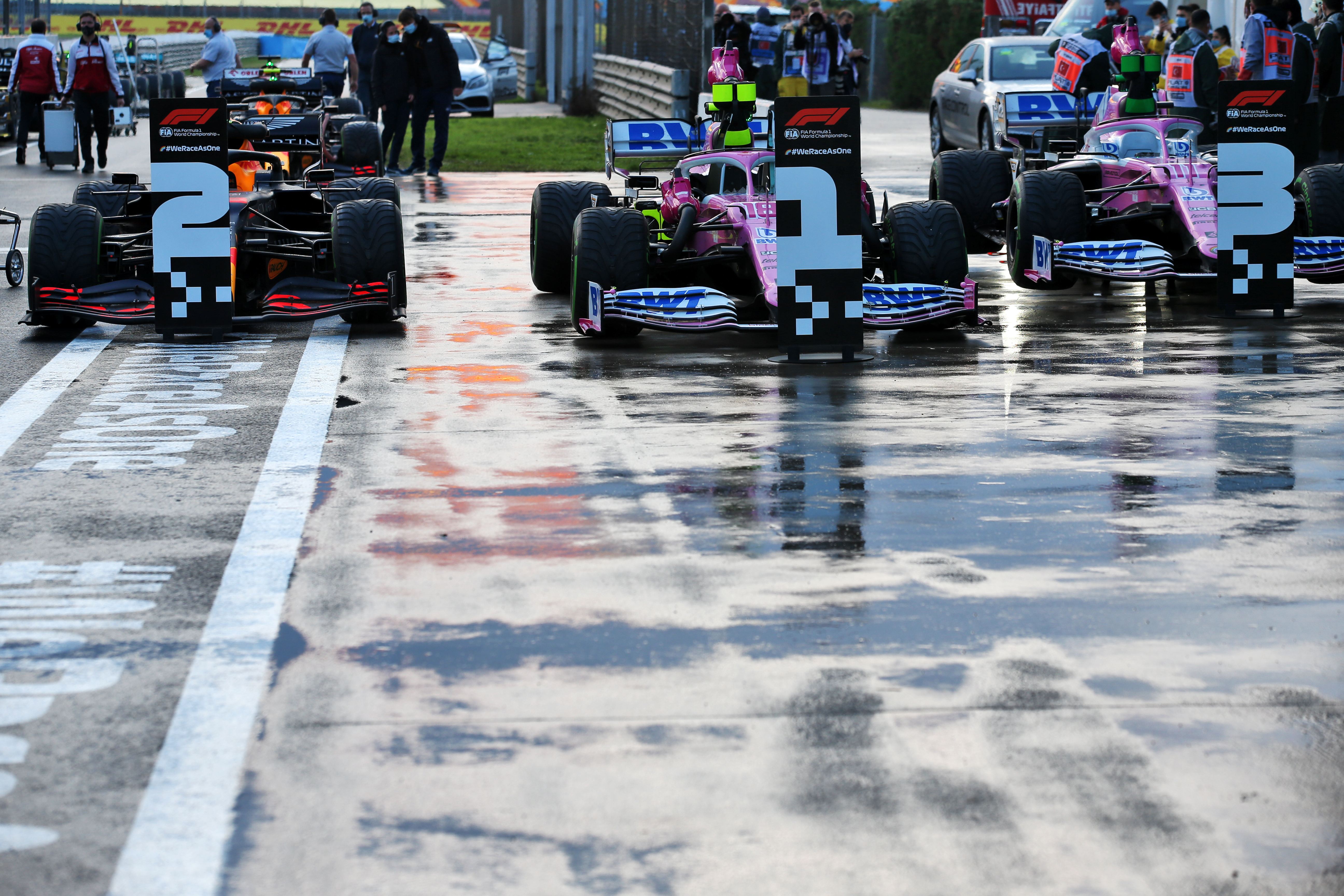
This played a part in Stroll’s shock pole position, which was the result of a combination of his skills in the wet and the fact that the Racing Point was able to energise the tyres quicker than most.
Indeed, team-mate Sergio Perez looked like favourite for pole position only to encounter Antonio Giovinazzi on his final lap, forcing an optimistic move into Turn 7, a rear-end slide and a resulting spin on the power as he threw caution to the wind to make up for time lost to the Alfa Romeo.
Others struggled to build tyre temperature, with the quickfire three-part qualifying format making it difficult for the Mercedes drivers. Hamilton was sixth – almost five seconds down – with Valtteri Bottas ninth, while both Ferrari drivers were eliminated in Q2.
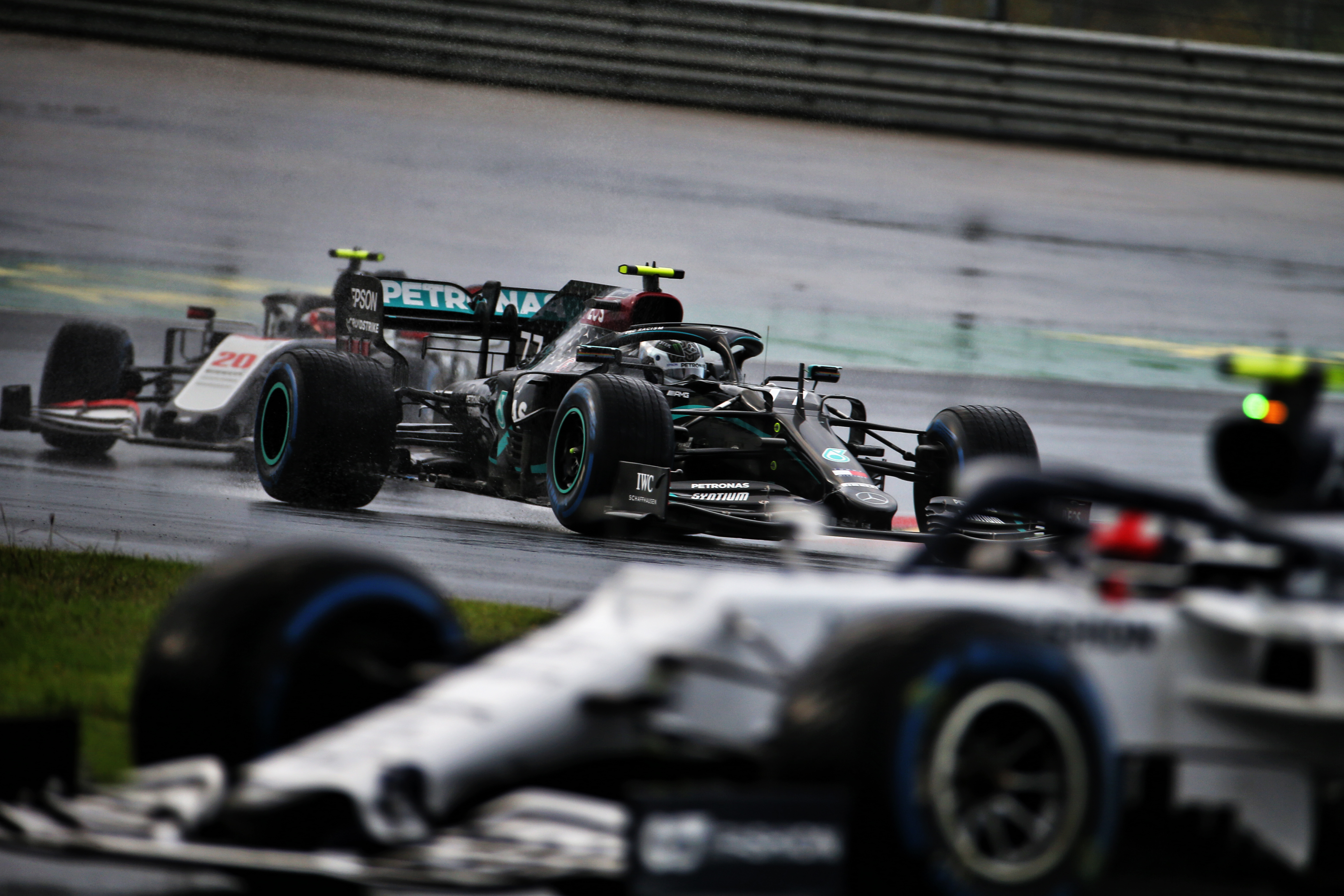
In the race, the longer stint lengths meant that it was possible to build and retain tyre temperature. It took the Mercedes around seven laps to switch the tyres on, but once that was achieved the car was comfortably the fastest, which created the conditions for Hamilton to take victory in a race that looked unwinnable while Stroll led the way early on.
Indeed, Stroll himself was among those who struggled when he switched to a second set of intermediates and worked the tyres too hard at the start of his stint, although this was partly attributed to losing a strake from his front wing that cost front-end load. He struggled badly and ended up finishing ninth, having led 32 laps on merit.
Hamilton stayed on the intermediates he switched to early, which avoided the need to go through another seven-lap warm-up phase. The Mercedes was able to show its pace and he took victory by 31.6 seconds despite having been 24.5s off the lead 19 laps in.
With the warm-up characteristics of the cars multiplied, Racing Point was at the opposite end of the spectrum to Mercedes. In the middle was Red Bull, which is why there was a phase during the race when Alex Albon looked to have a pathway to victory while Max Verstappen looked destined to work his way into the lead from first place but later had two spins, the first while trying to pass Perez.
The longer the stints went on, the more things fell towards those at the Mercedes end of the spectrum. Given a race with no interruptions or red flags, and with conditions never quite necessitating slicks, that fundamental pace was able to shine through.
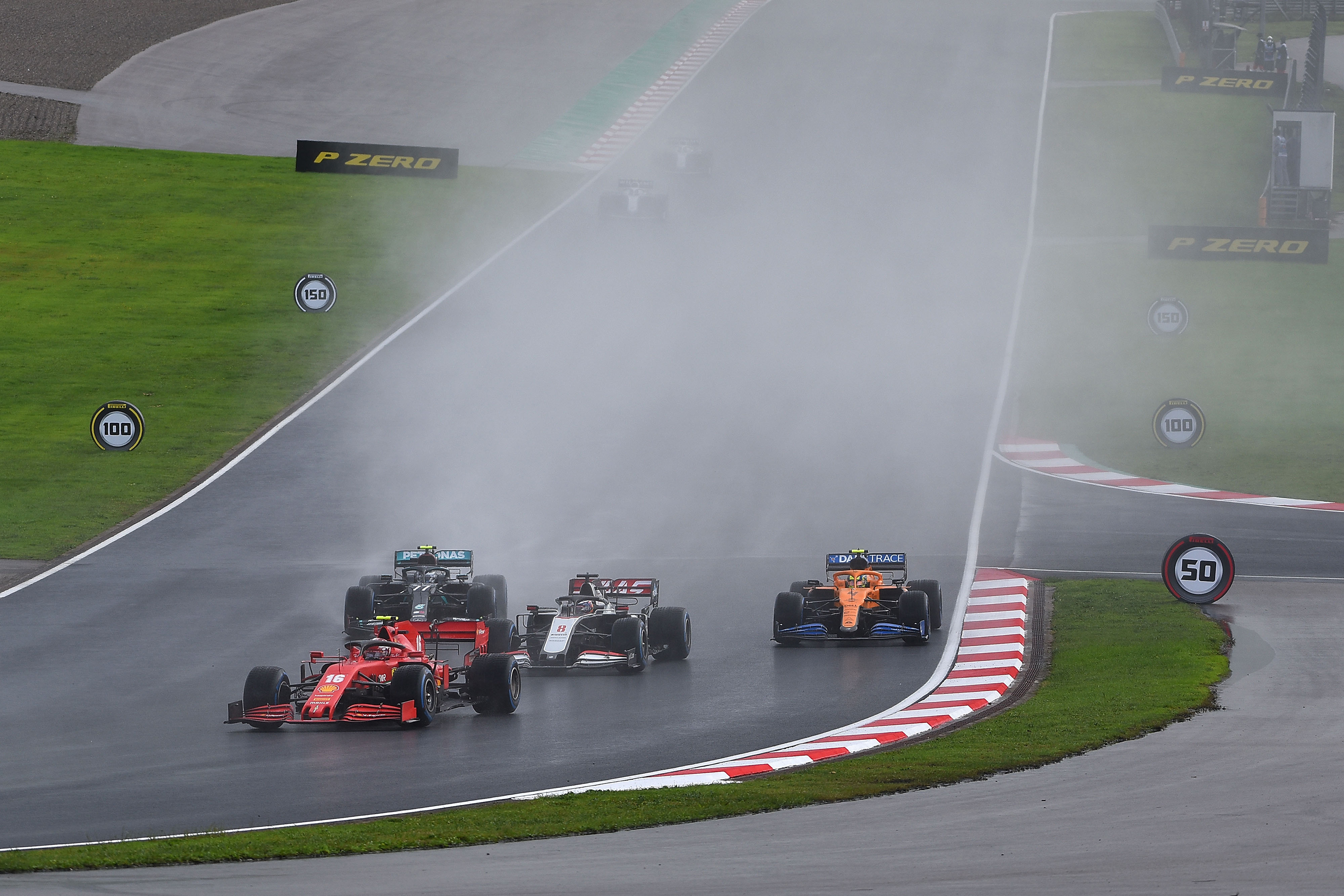
It was a similar story for Charles Leclerc, who briefly looked set to finish second before sliding to fourth after an error while battling with Perez heading into the final complex on the last lap that also let past Ferrari team-mate Sebastian Vettel.
While Vettel had jumped up the order thanks to the first-corner chaos, Leclerc did it the hard way on sheer speed and, but for the error that he vehemently chastised himself for over the radio after taking the chequered flag, would have been the driver of the day.
Perez himself finished second, as he’d taken a more conservative approach to managing his tyres from the off and didn’t descend into the troubles that afflicted Stroll so avoided the second pitstop. The advantages of his approach started to emerge towards the end of Stroll’s first intermediate stint when his advantage was eaten up by Perez prior to that ill-fated stop for a second set of intermediates.
But it was also a race of fine margins. Bottas spun at Turn 1 in avoidance of Esteban Ocon’s Renault, then clashed with him at Turn 9 later in the lap and suffered front wing and steering damage.
That made his Mercedes difficult to drive and impossible to catch if the rear stepped out thanks to not having the necessary lock. As a result, he had to drive ultra-conservatively, which cost tyre temperature, and when he did inevitably spin the tyre temperature plummeted and the awful spiral continued.
He ended up a lapped 14th, a remainder that just because a car can do the job doesn’t mean that it will if the driver can’t get the best out of it or keep it clean.
So with the track surface at the heart of the troubles, why should we not expect things to be the same this year? Firstly, the surface has had time to mature, which means it will be significantly more abrasive than it was last year partly thanks to the bitumen on the surface clearing.
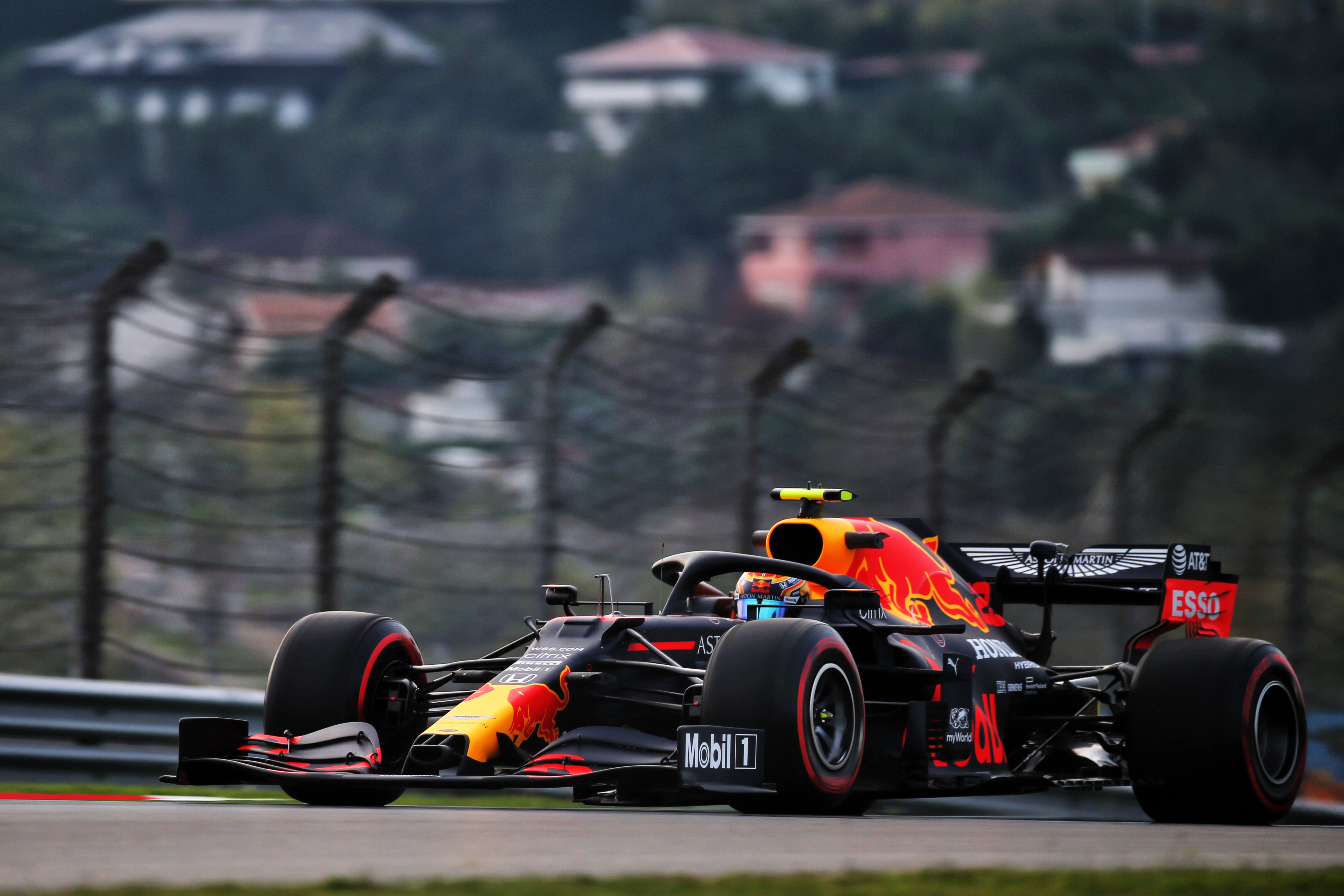
That evolution was already happening during Friday practice last year, with the pace improving by 6.5s from FP1 to FP2, and should be well-advanced, especially given the track surface has been water-blasted. On top of that, Pirelli has allocated the C2-C4 tyres, one step softer than last year.
“Turkey was one of the most dramatic and unpredictable races of last season, mostly due to a very slippery track as a consequence of low grip from the new asphalt,” says Pirelli F1 boss Mario Isola.
“The slipperiness of the circuit, exacerbated by the rain, caught many people by surprise and that’s why this year we’ve opted for a softer tyre nomination, also with the race taking place more than a month earlier, which should result in higher temperatures.
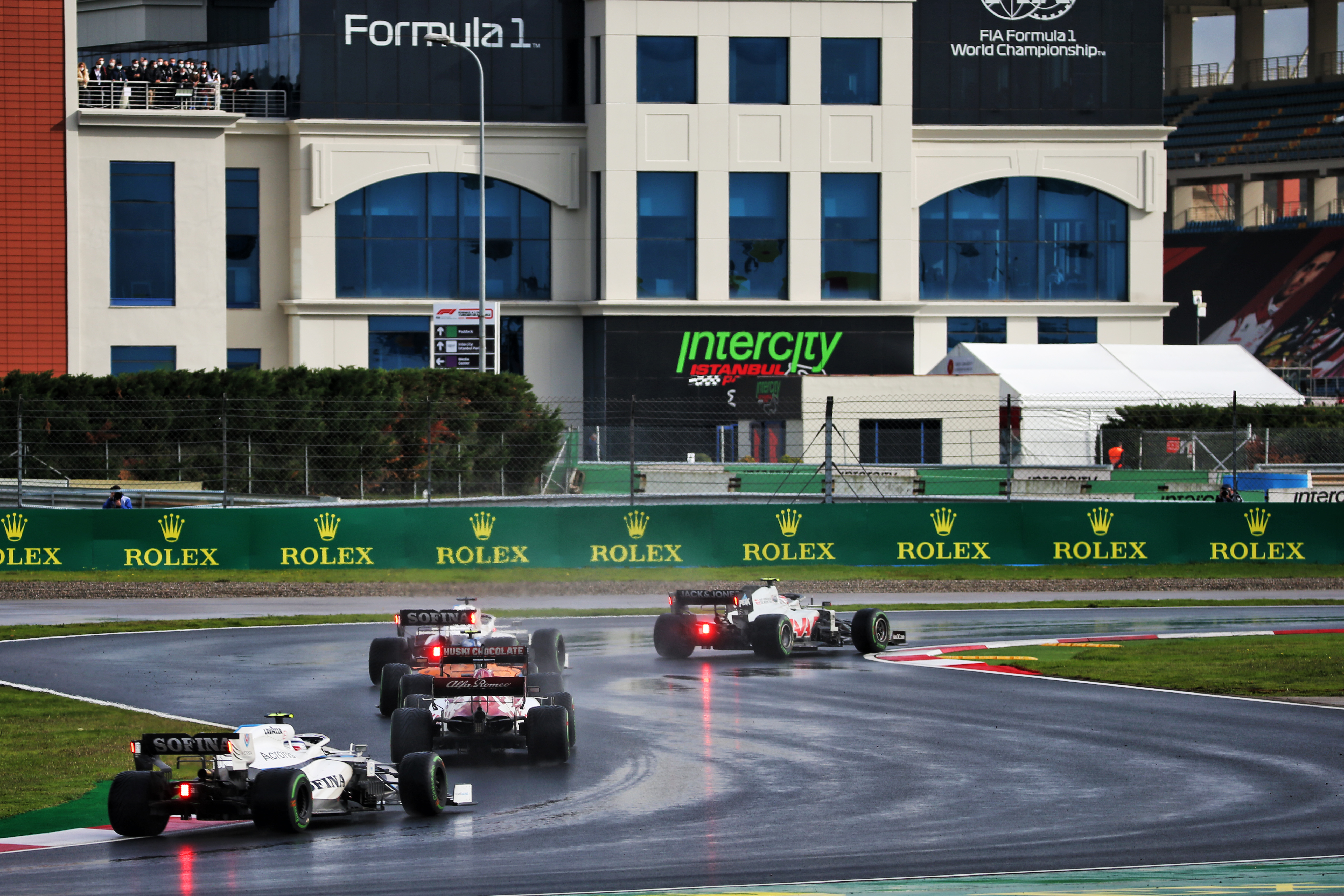
“Following our tyre nomination, the track has undergone a high-pressure water cleaning process, which should lead to greater roughness and more grip, so there’s also the possibility that with softer compounds we will face higher wear levels compared to last year. That’s something we will only find out when we get there.”
But while last year’s unique and extreme conditions won’t be repeated, with the situation so strange that race winner Hamilton was at times five seconds off the pace during the grand prix but still came through to win, there are still plenty of unknowns.
The difficulties last year mean teams will not have gathered as much useful data as they normally would for what is effectively a new circuit, while the evolution of the track surface is also an unknown factor. So even though the teams know more than they did heading into this race 11 months ago, it can still be characterised as effectively half a new circuit.
The fact the conditions will still be relatively cool also means that tyre warm-up could still be a challenge, so we might see a toned-down version of last year’s extreme situation.
And if it rains, which is possible, then as always all bets are off.


